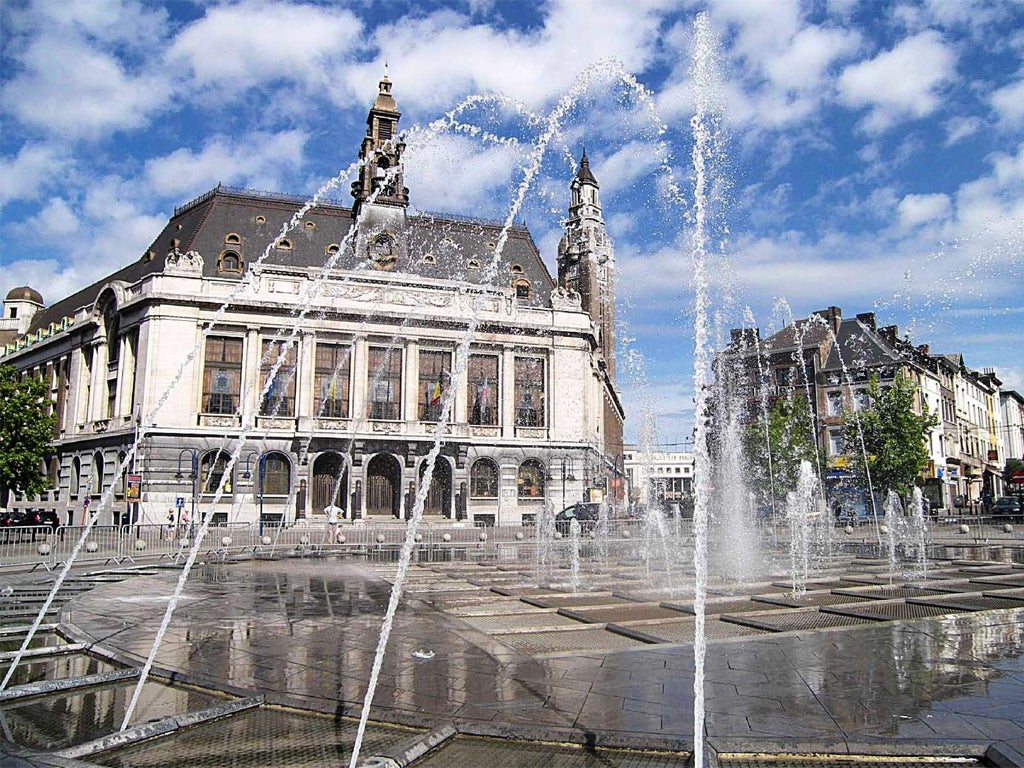The Independent's journalism is supported by our readers. When you purchase through links on our site, we may earn commission.
Charleroi: Phoenix from the flames
This former industrial base is on the rise again, says Harriet O'Brien

Charleroi is Belgium's answer to Newcastle. It's spirited. It exudes energy. The city grew rich from coal, then went into industrial decline between the late-1960s and the 1980s. The last of the mines in the area closed in 1984. There's a grittiness laced with charm. And the strength of the city is its people – the Carolos (short for Carolingians) are vivacious, warm hearted, and fiercely proud. And it's now in the throes of spectacular urban renewal.
Within the next few years Project Phoenix will see the city centre completely revamped and some striking architecture unveiled - not least the superb new police headquarters designed by Jean Nouvel and due to be completed in 2014. The Carolos have come through other tough times in the past - and have recovered with remarkable zest and zeal.
In August 1914 Charleroi became the scene of one of the bloodiest conflicts of the First World War, as the French Fifth Army confronted the German Second Army across the River Sambre. On 22 and 23 August fighting took place around factories, power stations and mines. Industrial chimneys collapsed, and buildings blazed as streets were set alight. The French retreated under additional attack from the German Third Army which arrived in force from the south-east.
To protect his people and his city from further devastation the mayor of Charleroi, Emile Devreux, had no option but to agree a treaty with the Germans. The demands were enormous, and among a great quantity of food the city had to provide for the German army were 40 tons of bread and 20 tons of smoked meats. That was in addition to five cars, three tons of gasoline, all the city's armaments and the sum of 10m Belgian francs.
The treaty was signed at 227 Rue de Villers, now a building of the Université Libre de Bruxelles, in the suburb of Couillet. As of next year the story of the treaty will be detailed on a noticeboard outside the property as part of a project to highlight nine First World War sites around Charleroi. In each case additional information will be available on smartphones via barcodes on the boards. Other sites will include the former steel works of Cockerill (now a music venue renamed Rockerill) at Rue de la Providence in the suburb of Marchienne-au-Pont, and here information will be given about what happened to the city's industry under occupation - and how some factories were taken down and rebuilt in Germany.
There is plenty more to see in Charleroi. Head to the centre where the Tourist Office at Place Charles II ( charleroitourisme.be) will supply you with a leaflet giving details of an Art Nouveau walking trail you can follow around town.
At the end of the 19th century Charleroi's old fortress was taken down and much of the centre was redevised with broad boulevards, where the newly rich industrialists commissioned houses in the latest style, with great swirls of ironwork, stained-glass embellishments and big, bold windows. By contrast, don't miss the City Hall, also on Place Charles II, which was designed shortly after the First World War. It is a masterpiece of Art Deco architecture, with sleek lines and geometric detailing, and was created as a major statement of Charleroi's post-war resurrection.
The greatest show of the city's spirit of revival lies a few kilometres south in the suburb of Marcinelle. Le Bois du Cazier ( leboisducazier.be) is a stunningly conceived museum of industrial history created on the site of a mining disaster. The colliery here opened in 1822 and by the 1950s was producing 170,000 tons of coal a year and employing nearly 800 miners from across Europe - many of them Italians who, in the aftermath of the Second World War, had arrived in Charleroi in great numbers.
On 8 August 1956 fire broke out. The death toll reached 262 and the accident became all the more poignant for being one of the earliest such tragedies to receive substantial television news footage. The site became a museum in 2002. An audio tour takes visitors around an interpretation centre in the historic buildings where conditions on the coal face have been recreated. Other displays are housed in the old shower rooms, above which is an amazing collection of gargantuan machinery from the old iron and steelworks in the region. In July last year Le Bois du Cazier, along with three other former mines in Wallonia, was awarded Unesco World Heritage Status.
Staying there
Charleroi's accommodation has yet to catch up with the city's other contemporary refits. In the centre the Leonardo Hotel (00 32 7131 9811; leonardo-hotels.com) is a comfortable three-star option on Boulevard Joseph Tirou. Doubles from €59 room only. Chambres avec Vue (00 32 71 36 06 43; chambre-charleroi.be) at 30 Rue du Basson in the Marcinelle district offers two rooms in a charming house owned by artist Patricia Mignone. Doubles €70 including breakfast.
Eating there
Choose from over 65 beers at La Cuve a Bières (00 32 7132 6841) at 68 Boulevard J Bertrand. Enjoy industry-inspired artworks and modern brasserie dishes at La Machine (00 32 71 30 75 33) at 16 Rue de Grand Central. For a gourmet treat head slightly out of town to L'Eveil des Sens (00 32 7131 9692; leveildessens.be) at 105 Rue de la Station in the suburb of Montigny-le-Tilleul, where chef Laury Zioui has won a Michelin star for his cuisine based on a blend of African, French and Belgian flavours.
Subscribe to Independent Premium to bookmark this article
Want to bookmark your favourite articles and stories to read or reference later? Start your Independent Premium subscription today.

Join our commenting forum
Join thought-provoking conversations, follow other Independent readers and see their replies